6 Varieties of Mint to Grow for Superb Flavor and Fragrance
After sifting through nearly 500 varieties, our expert shares which ones are the best tasting
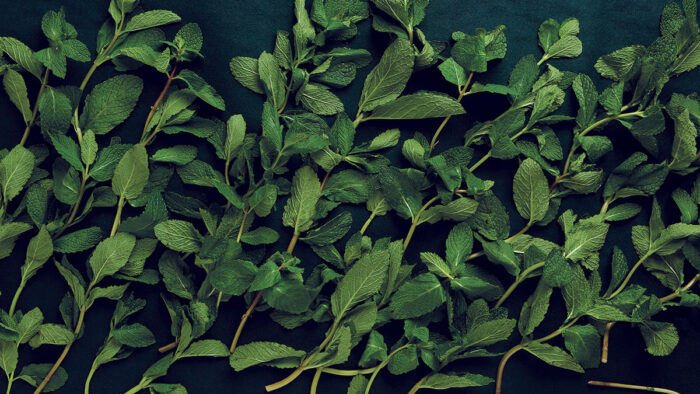
When I think of mint, the first thing that enters my mind is its inimitable fragrance. With one whiff of a crushed mint leaf, menthol fills my nose with a coolness that invigorates me, opening my sinuses, awakening my senses, and clearing out the cobwebs in my mind. Just the thought of mint in my mouth makes my tongue tingle. Peppermint penetrates the taste buds with a lively pepperiness; spearmint permeates them with a subtle sweetness. Mint is exotic and yet a part of our everyday lives. Can you imagine growing up in America without tasting mint chocolate chip ice cream? What would tabbouleh be without mint? And what about our grandparents and the mint candies hidden in their pockets or set out on the coffee table? Menthol, which gives mint its well-known scent and flavor, is found in foods and medicines worldwide. It’s used commercially in toothpaste, chewing gum, and mouthwash. Menthol has soothed many stomachs, and it’s an antiflatulent to boot.
There are about 25 well-defined species in the genus Mentha, and there are more than 500 named varieties. Many of these are variants or hybrids of the 25 species, demonstrating mint’s tendency to hybridize readily. Mint can also be invasive, so it is best to grow it in containers. All mints have square, branching stems and oval or lance-shaped leaves with finely serrated edges. All contain volatile oils that create the aromas mints are known for. My three favorites for cooking are peppermint, spearmint, and orange mint. But there are a few other varieties that deserve a spot on your patio (if you have the space) because of their superb flavor and ease of growing.
Mint Basics
|
Applemint (Mentha suaveolens)
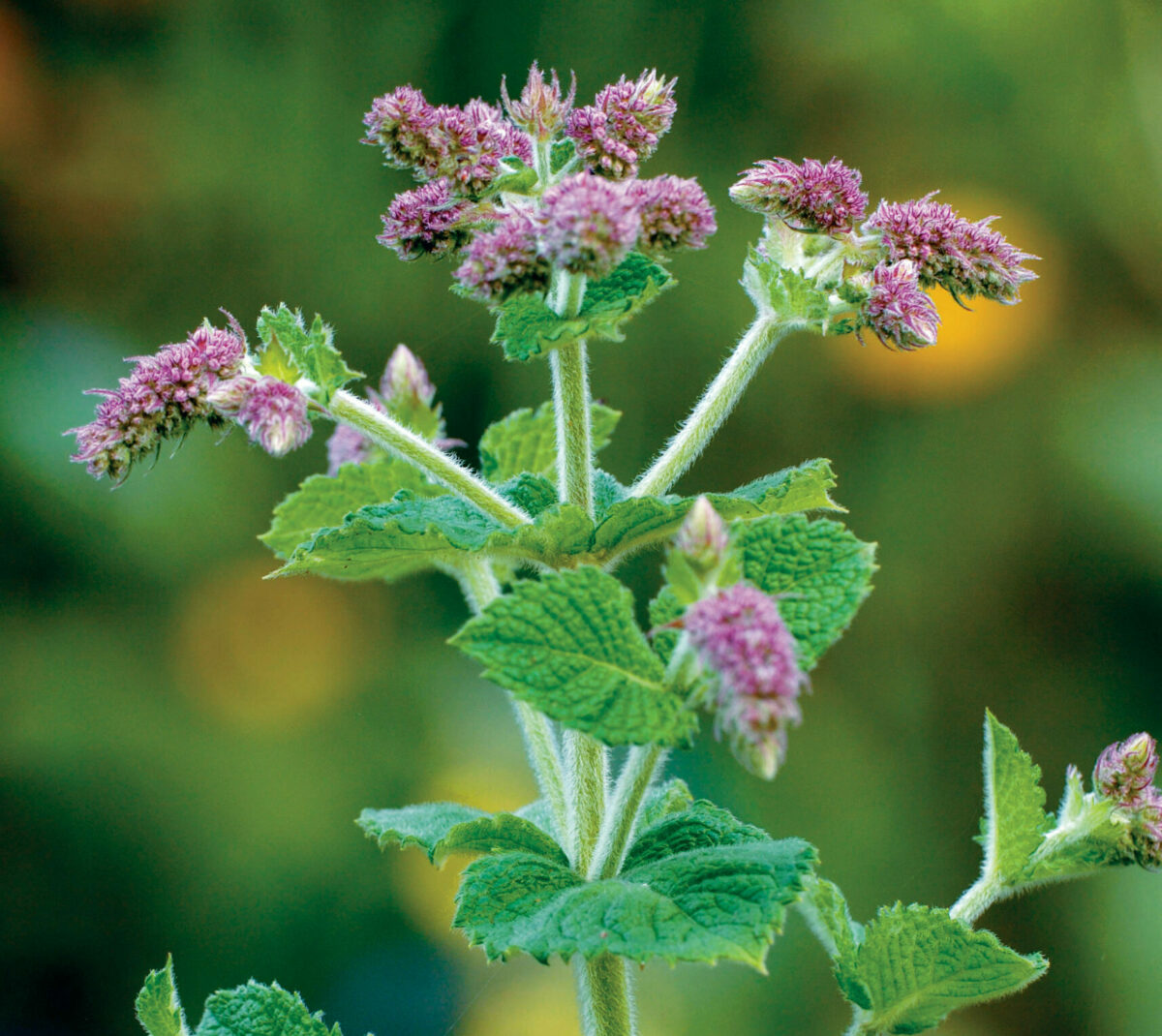
This fuzzy-leaved mint, which comes in both green and variegated types, has a mild flavor and a slight apple-like aroma. It’s good with fruit salads, in beverages, or as a garnish.
Double mint (M. × gracilis ‘Madalene Hill’)
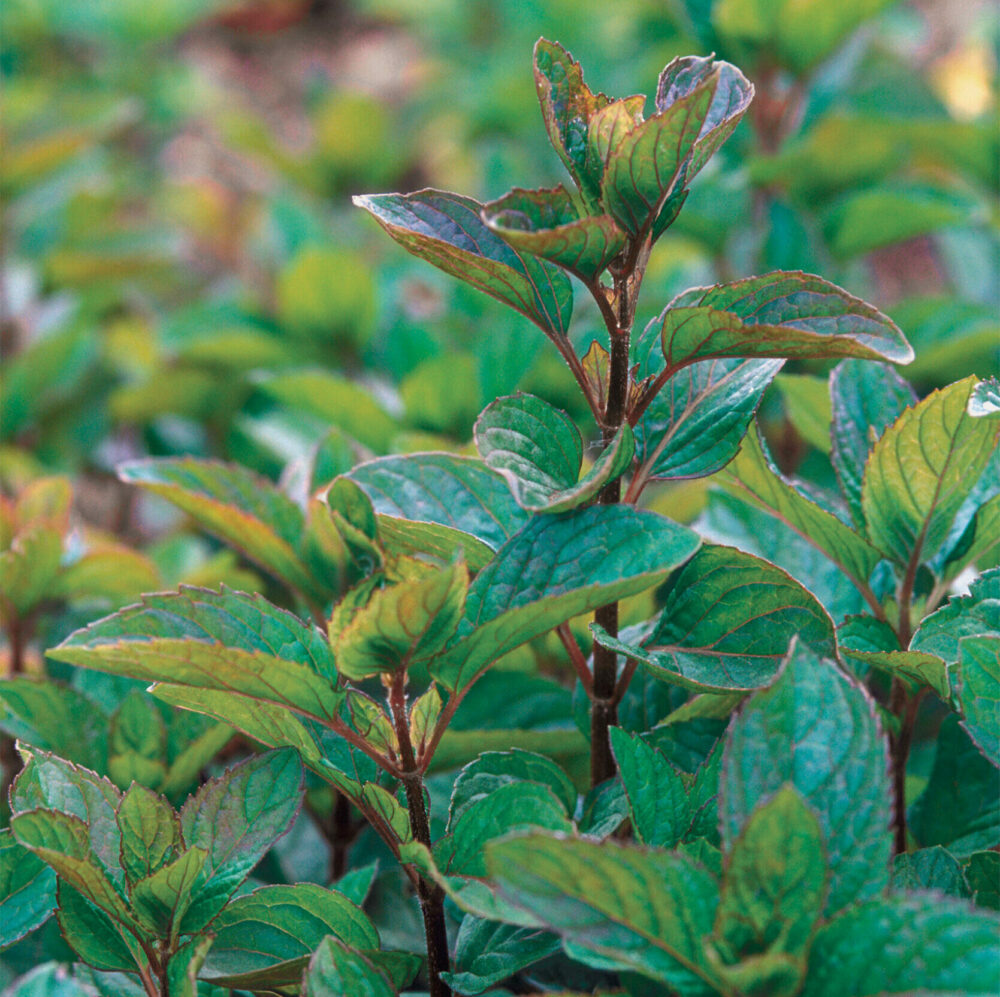
This plant from Southeast Asia was brought to people’s attention by Madalene Hill in the 1960s and was originally called red-stem applemint. This remarkable natural hybrid is a wonderful and unusual mint, packed with the fragrance and flavor of both spearmint and peppermint.
Spearmint (M. spicata)
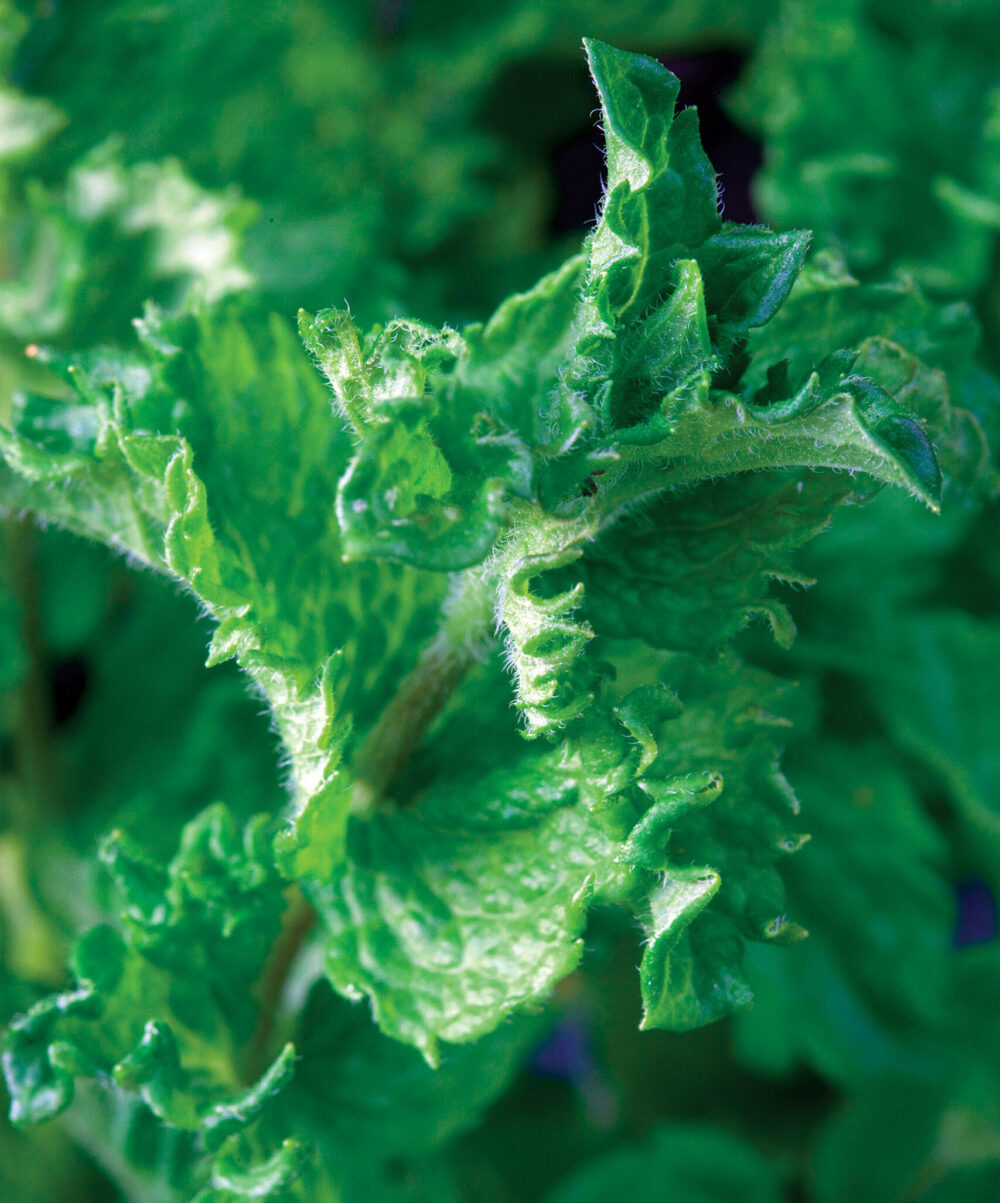
There are many kinds of spearmints; most have hairy leaves that are a light, bright green. Spearmint is milder and sweeter than peppermint and makes wonderful mint tea, sauces, and jellies. It is the mint I choose for fresh pea soup and broiled summer tomatoes. Because spearmint is similar to the mint found in the Mediterranean, I use it when I prepare dishes characteristic of that region, such as tabbouleh. Curly mint (M. spicata var. crispa, pictured), which is a type of spearmint, is sweet and fragrant with ruffled leaves. Use it in the same manner as the other spearmints. ‘Kentucky Colonel’ is a mild-mannered spearmint that is perfect in mint juleps or any other summertime beverage.
Orange mint (M. × piperita f. citrata ‘Orange’)

This attractive plant has small, oval, bright green leaves and small lavender blossoms that make a tasty edible flower. Orange mint’s intense perfume, which is reminiscent of Earl Grey tea, boosts its strong citrus flavor. It is delicious with fruits, especially the stone fruits of summer—like peaches, nectarines, plums, and apricots—and it works well in drinks, sauces, preserves, and desserts.
Ginger mint (M. gracilis ‘Variegata’)
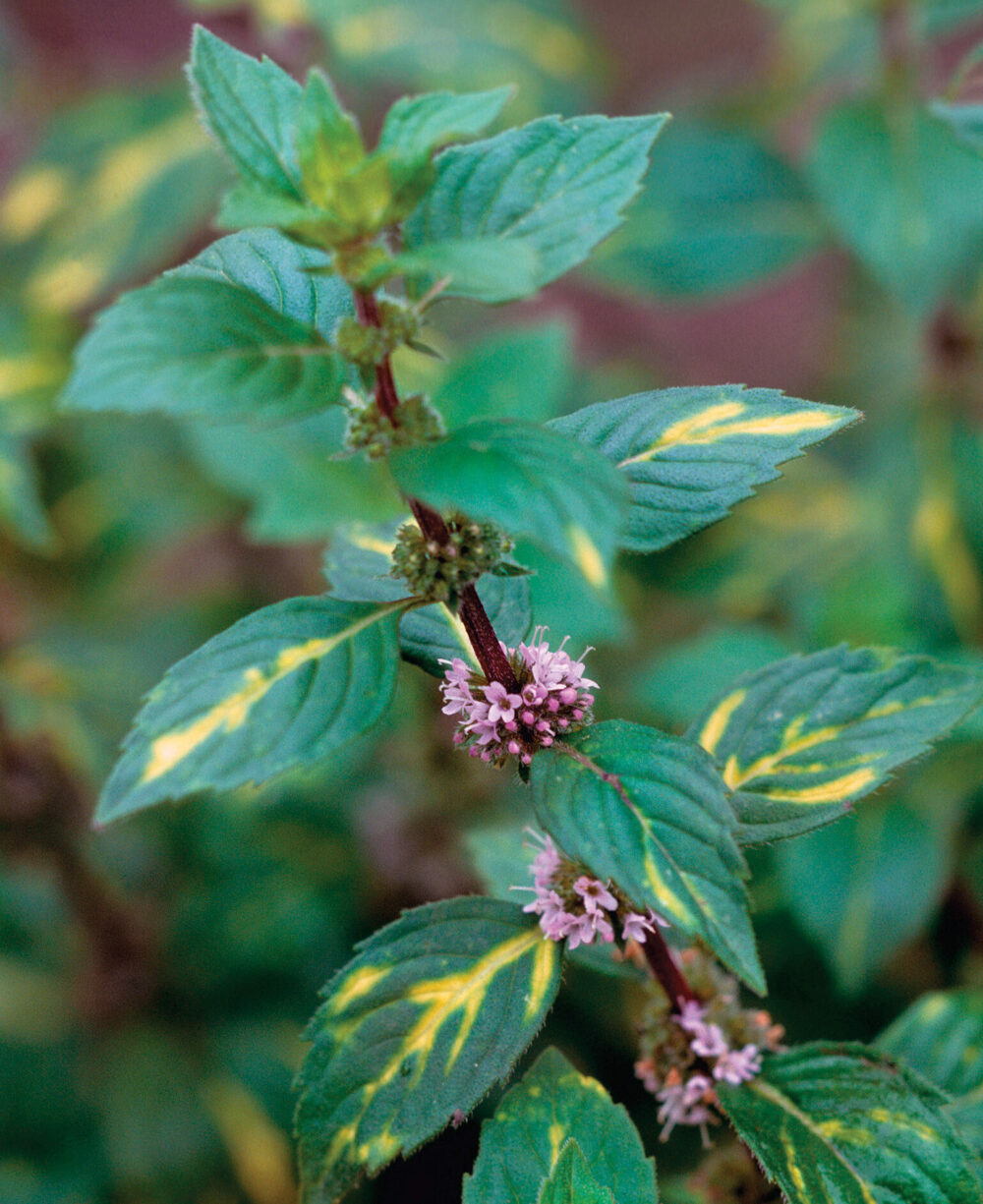
Ginger mint adds zest to cool summer soups and vinaigrettes. It is tasty in baked goods, like scones and gingerbread, and is good in beverages such as tea, lemonade, and fruit punch. The variegated leaves make it an attractive addition to ornamental gardens.
Peppermint (M. × piperita ‘Mitcham’)

The best-tasting peppermint is found under various names throughout the country: ‘Mitcham’, black-stemmed, ‘Blue Balsam’, and even chocolate. It is highly mentholated, almost hot, and full of flavor. The plant has a deep purple-blue cast to the stem, and the leaves are a bit larger and rounder than those of other peppermints. Its strong taste holds up well in cooked dishes. It’s also good in drinks and desserts where you want intense flavor. Chocolate mint works well with chocolate—in cookies, cakes, or brownies.
Dry Mint for Year-Round Use
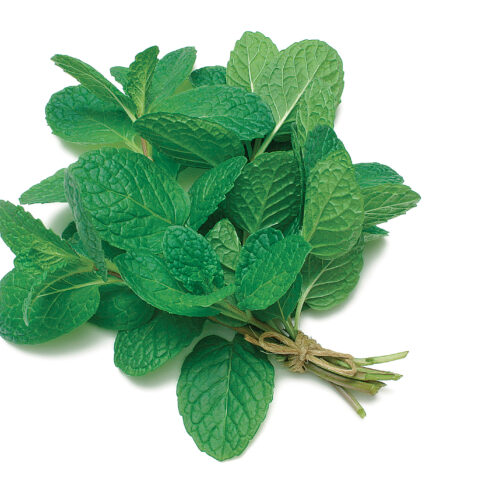
Cut the stems, and tie them together in bunches. Hang the bundles in a shady place with good air circulation. Keep the drying leaves out of direct sunlight and away from moisture for seven to 10 days. You can tell the leaves are completely dry if they crackle when rubbed between your fingers; if they are pliable, they still have moisture in them. Pack the completely dried whole leaves in glass jars, and store them away from direct light.
Adjust the ratio, and add only one-third the amount of dried mint to a recipe if it calls for fresh. In other words, if a dish calls for 3 Tbs. fresh mint, you would use instead 1 Tbs. dried mint leaves. The volatile oils are much stronger in a dried herb than in a fresh herb because all of the moisture has evaporated. It is best to crumble whole mint leaves into the dish you are making just before serving.
Susan Belsinger gardens, teaches, and lectures on growing and cooking with herbs and vegetables.






Comments
Log in or create an account to post a comment.
Sign up Log in